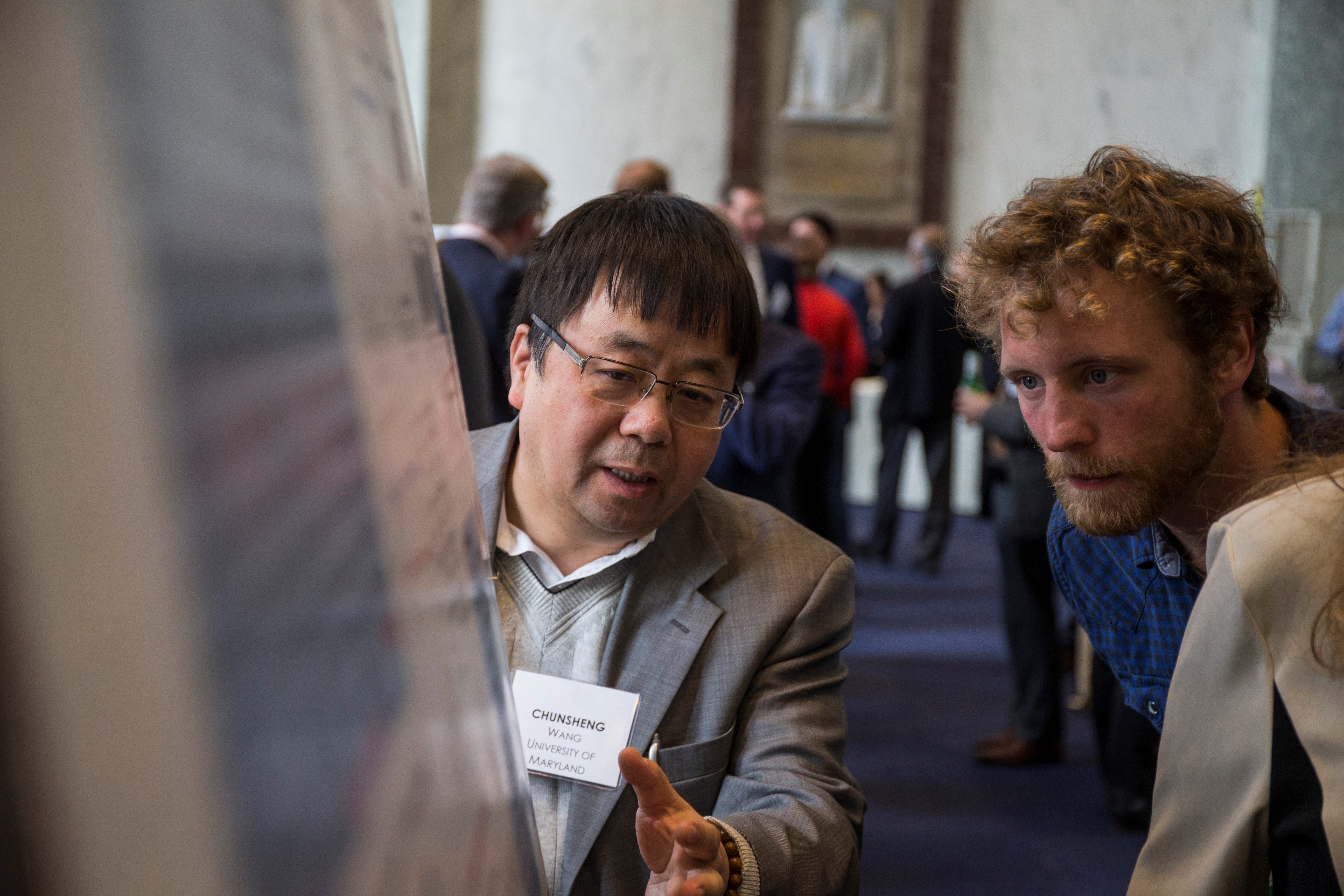
ARPA-E Innovation Showcase Recap
On April 4, the Bipartisan Policy Center (BPC), in partnership with the National Venture Capital Association, hosted the 2019 ARPA-E Innovation Showcase on the Hill. BPC invited six ARPA-E teams to display their respective technologies for congressional staff members, industry stakeholders, and Department of Energy leaders.
Approximately 140 people attended the event in the Rayburn House Office Building to interact with ARPA-E teams, see first-hand the technologies they are developing, and network with other attendees. The Showcase is usually held in concert with ARPA‑E’s Energy Innovation Summit, but was a standalone event this year, as the Summit will be held in July in Denver, CO.
ARPA-E’s Acting Director Chanette Armstrong delivered remarks that explained the importance of ARPA-E’s mission and highlighted the agency’s latest impact metrics—including that 145 projects have attracted more than $2.9 billion in private-sector follow-on funding.
Below, check out what each team is working on to change the energy landscape and view pictures of their exhibits.
The University of Delaware is developing a fuel cell that can operate near 100°C and efficiently convert ammonia to electricity for electric vehicles (EVs) and other applications. The goal is a cost-competitive direct ammonia fuel cell with high power density and rapid start-up enabled by the low operating temperature. To accomplish this, the team is developing new materials, including low-cost, high-performance hydroxide exchange membranes that can maintain stability near 100°C and novel ammonia oxidation catalysts.

Above: Dr. Reza Abbasi, Postdoctoral Researcher at the University of Delaware, shows off a small fuel cell.
The University of Maryland is using water-based magnesium and hydrogen chemistries to improve the energy density and reduce the cost of EV batteries. Typical EV batteries require heavy components for protection and to ensure safety. Water-based batteries are an inherently safer alternative, but can be larger and heavier than Lithium-ion batteries, making them inefficient for use in EVs. Maryland’s water-based battery uses a magnesium hydrogen chemistry that could double energy storage capacity, for a much lighter system. The use of safe, inexpensive materials could also reduce the cost of battery management and improve reliability.

Above: Dr. Chunsheng Wang, the project’s principal investigator, explains the benefits of their novel water-based battery.
The University of Arkansas is developing a power inverter system for use in the electrification of heavy construction equipment. The team is leveraging the advantages of wide-bandgap semiconductors in the converter elements and the converter’s gate driver. Building the low-voltage circuitry from the same materials as the power devices enables higher reliability, longer life, and a more compact system. If successful, the team could significantly improve power density and cut converter costs in half compared to today's technology.

Above: Dr. Alan Mantooth, The Twenty-First Century Research Leadership Chair in Engineering at the University of Arkansas and the project’s principal investigator, explains how their innovative power inverter system could electrify heavy construction equipment.
Swarthmore College is designing and developing new modules for fusion energy that accelerate and evolve plasmas to create elongated structures known as Taylor states. These structures exhibit potentially beneficial properties upon compression, and could be used as a fusion target if they are able to maintain their temperatures and stability long enough to be compressed to fusion conditions. The new plasma-forming modules will be tested using the team's Swarthmore Spheromak Experiment (SSX) device, which will enable rapid progress in understanding the behavior of these plasma plumes.

Above: Dr. Michael Brown, Morris L. Clothier Professor of Physics at Swarthmore College, explains how his team is designing and developing new modules for fusion energy.
Westinghouse Electric Co. is developing a self-regulating "SCB", where fission-induced changes in the solid material will inherently regulate the reaction rate in a nuclear reactor. The design will allow the reactor to achieve safe shutdown without the need for additional controls, external power sources, or operator intervention, enabling highly autonomous operation. The team is also conducting modeling and simulation to demonstrate the SCB’s self-regulating ability, with additional testing to validate modeling and simulation tools and confirm manufacturability.

Above: Mr. Yasir Arafat, the eVinci Micro Reactor Technical Lead at Westinghouse Electric Company, looks on as an attendee explores an advanced nuclear reactor facility via virtual reality.
Donald Danforth is coordinating a national test site network with broad environmental diversity to characterize plant performance and accelerate breeding. The flagship system is a state-of-the-art plant phenotyping system in Arizona that generates high-resolution data of plant performance in field conditions. The team is combining phenotypes with extensive genetic data to create an open source reference dataset and innovation environment to accelerate bio-energy crop productivity gains and maximize domestic capacity.

Above: Dr. Duke Pauli, Assistant Professor in the School of Plant Sciences at the University of Arizona, explains how the state-of-the-art plant phenotyping system in Arizona generates high-resolution data of plant performance in field conditions.
